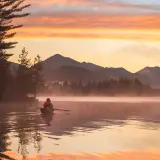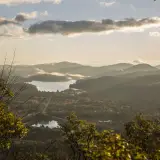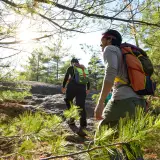Exploring a New Place
I’ve wanted to hike into the recently acquired Boreas Ponds Tract since the state bought it over a year ago, and the other day my friend and I were able to explore the area for the first time. We first checked out the access points off Ragged Mountain and Sand Pond Roads, but our plan all along was to walk in along Gulf Brook Road, which allows the easiest entry into the site. Be aware that if you go, parking along Gulf Brook Rd. to Boreas Ponds is allowed in designated parking spots at parking areas only. Parking along the roadway is prohibited. If the Four Corners Parking Area is full, users must back track to the next available parking area.
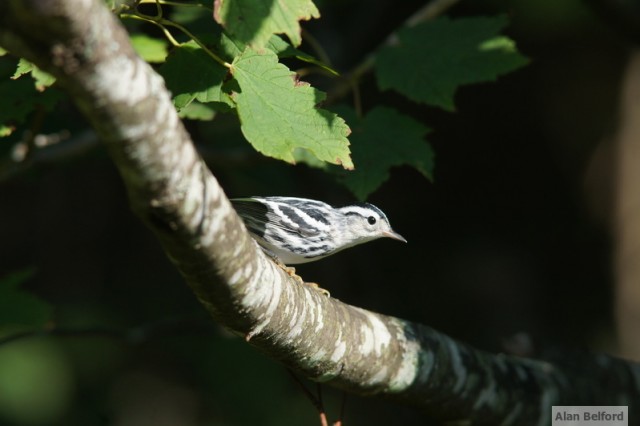
We drove better than 3 miles along the dirt road, spotting a few Wild Turkeys and stopping for a couple of mixed flocks of birds, which included species like Least Flycatcher, Red-eyed Vireo, Blue-headed Vireo, and Yellow-rumped and Black-and-white warblers. But the day was windy and cool after a fall cold front had pushed through the region, and many of the birds seemed to stay hunkered down as a result – or else they had raced south on strong north winds.
A Nice Hike
The weather made for a comfortable hiking day, and we reached the farthest parking area along the road, loaded up, and began the 3.5 mile hike into the Boreas Ponds themselves, marked by a dam. Wren led the way with her nose on the ground, and we chatted as we listened for birds in the windy forest. More interesting than the birds was a set of moose tracks that followed the road for probably close to a mile – many animals use roads as an easy route through the forest. After all, the road made for easy walking for us, too, and we made quick time of our efforts.
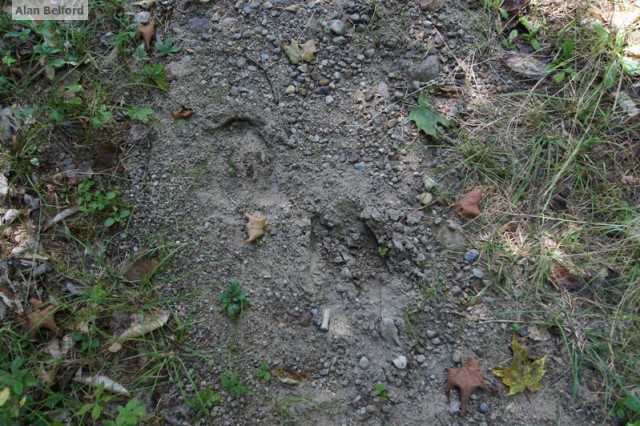
Amazing Views
As a result, we soon arrived at the bridge at about 2.5 miles into the hike. It offers canoe access to LaBier Flow and it's the first place paddlers can put-in in the complex. We paused and sat on the rocks, taking in the views of Wolf Pond Mountain and Boreas Mountain. Wren took a dip in the water and chewed a few sticks.
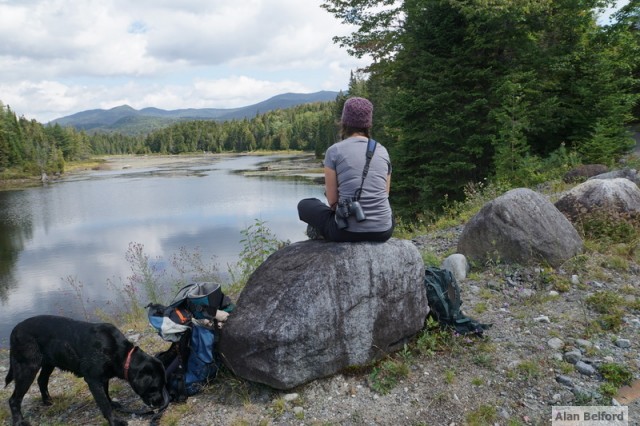
From LaBier Flow, the habitat became more coniferous and boreal in nature, meaning that earlier in the summer the air would have been filled with the songs of species like Magnolia and Nashville Warblers, among many others. We contented ourselves with a few Red-breasted Nuthatches and White-throated Sparrows, spying an adult Bald Eagle soaring in the sunlight in the distance.
The junction just past the flow allows hikers to go a few different directions in the complex, but we kept heading toward the dam to see the Boreas Ponds themselves. That mile went quickly, and we were soon in awe of the view of the High Peaks to the north. By this point we were quite hungry and we took lunch on the rocks overlooking the water, admiring the view while a stiff breeze zipped across the water to our faces. Adding a touch of ambience, a Belted Kingfisher perched along the side of the pond, and a Common Loon fished in the dark, wavy waters. Not one to be dissuaded by rolling water, Wren did her characteristic swim, exploration, and stick chewing before getting a few snacks from our lunch and suddenly just curling up to sleep on the rocks. From where I was sitting, her position looked uncomfortable, but the rocks were warm in the sun and she had been active during the previous days – clearly she was tired.
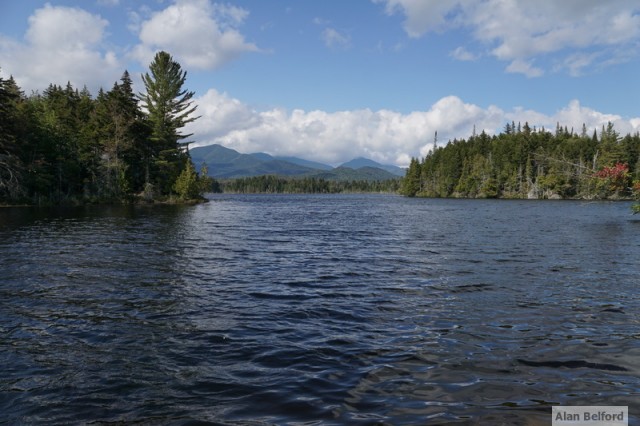
While we were eating, we met a few folks looking over the site as they considered management questions for the enormous tract. We chatted with them, gaining a better understanding of the area and how the land might be managed going forward. Our scenic – and educational – lunch over, we continued further along the road beyond the dam, perhaps exploring another mile before we decided to turn around.
The hike out was much like the way in – with stops at the overlooks of the Boreas Ponds and LaBier Flow, where we spotted two Hooded Mergansers and watched them fish and poke their way along the edge of the water in search of food. A third merganser flew overhead as we stood there, and we saw two Red Crossbills as well – I was hoping we’d find some during our hike. Another Belted Kingfisher chattered as it flew along the edge of the water.
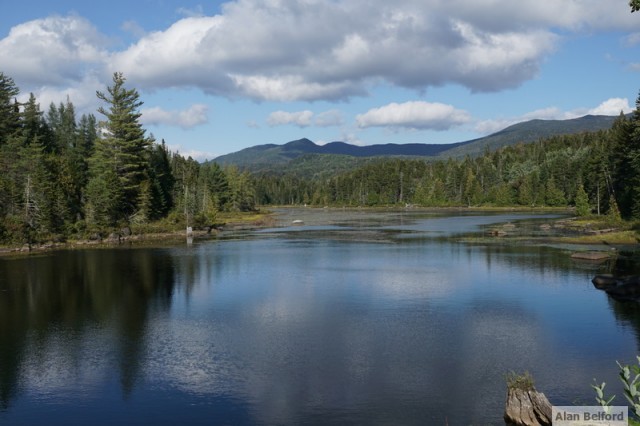
As nice as the hike was, we were happy to finish the walk and to get back to the car, where we snacked as we drove the dirt road back out to Blue Ridge Road. We would look for a place to stop for dinner on the way home.
Fall is a great time in the Adirondacks for birding, hiking, and outdoor adventure. Don’t miss your chance to explore the region, and check out our lodging and dining pages to learn more!

